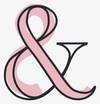Early Modern English - Glossary Flashcards
The Early Modern English Period covers what years?

1500-1700
An Ampersand is which symbol, used as an abbreviation?
Example?

& Symbol
Example: &c = etc
An ‘Ap___ {E}’ is often found on which word class?
- “Shee” is a ___ person s__ pronoun
- “__” –> 1st personal plural pronoun

Pronouns
“Shee” –> 3rd person singular pronoun
“Wee” –> 1st personal plural pronoun
When ‘eth’ or ‘est’ is present in a word - such as KNOWETH this is known as?

Archaic Inflection
Capitalisation

is SELF e___ but in Early Modern English there was non-
standard capitalisation of n___ with what purpose?
Explanatory
nouns
emphasis
When a text says “Methinks”
this is an example of which method, begining with C?

Compounding
Which letters are Consonants?

Everything excluding A,E,I,O,U
The Method of “D__ of Letters” was often used in adjectives
such as …

Doubling
Skillfull –> where in PDE there’s only ONEL used in the final positions
Double Negatives are seen as un___ in Present Day English
but often used for what in Early Modern English?
- Which well known text has examples of Double Negatives?

Ungrammatical
Emphasis
First Translation of the Bible By King James
- Who’s dictionary was the first substantial one that contributed to the standardisation of English spelling & d___
- When was it published? {Modern E.}
- How many words did it contain?

Definitions
Dr. Johnson’s
1755
40,000
What is it called when the E vowel is ommitted from the EDsuffix and replaced by an o___ ap___?

Omissive Apostrophe
Method: Elided ‘ed Suffix

When the English language ‘borrows’ from French with words
such as “R___que” this is known as?
{F.I.O.T.S}

Romantique

French Influence on the Spelling
What type of influence is seen when nouns are

CAPITALISED?
Germanic
The THREE positions where something can be located are?
{I.M.F}

Initial, Medial, Final
There are different interchanges in the Early Modern English
Period such as:

U/V
I/Y
- King James’ Bible was an English translation of the Christian Bible for which church?
It begun in 1604 and was completed & published in which year?
- It has been described as one of the most important books in English c___ as well as a driving force in the shaping of what?

Church of England
1611
Culture
The English Speaking World
- What was the name of one of the first attempts to make
English language more respected + accessible?
How many words did this book have?
- When was the book first published & what era is this classed as?

Mulcaster’s Elementarie
8000
1582 –> Early Modern English Period
What are examples of Non Compounded Reflexive Pronouns?

‘him self’ & ‘my self’ –> which are compounded in Present Day English
In the sentence “the Turks Drink” what method of omission is
being used?

Omission of Possessive Apostrophe

Like the Omission of the Possessive apostrophe, you can
simply have ‘Omission Of An Apostrophe’ which is used to
elide what suffix & on what verb?
EG“Hop’d”

Elide an ‘ed’ suffix on a stative verb
like “hop’d”

What is it called when a writer uses various spellings of the
same word such as “Dropsy” & “Dropsie” ?

Orthographical Variation
Passive Voice is when what happens to the subject of the
verb?

The subject is a recipient of a verb’s action

Phonetic Spelling refers to when words were written …

How they were said
EG Peece

The most common examples of this method are “twas” and
“tis” –> what’s the method?
{Clue: P__litics}

Proclitics








